On November 7, 1876 Samuel Jones Tilden, Democrat, of New York, won the election to succeed Ulysses S. Grant as President of the United States. On March 5, 1877 a Republican from Ohio placed his hand on the Bible, looked the Chief Justice in the eye, and repeated, “I, Rutherford Birchard Hayes, do solemnly swear…” The elections of 1876 are unique: the only time when we know the result was fixed and the loser entered the White House.
Tilden was sixty-two when he began his great adventure. He was born in New Lebanon, New York. His father was a wheel-horse of the Albany Regency, the Democratic machine created by Martin Van Buren—“the Little Magician” —that dominated state politics from 1820 to 1840. Tilden grew up among the Regency’s leaders. Having inherited his father’s knack for analysis and deduction, Tilden simply listened to their conversations on great issues and low politics. By eighteen he was publishing political articles in the Albany Argus, by nineteen essays and pamphlets on taxes and banking. He often advanced his agenda with the pen: his research was thorough, his logic impeccable, and his prose cool, unemotional, logical, and persuasive.
The writing reflected the man. Tilden was cold and aloof. His only passions were politics and the law. He never married. He probably had no interest in sex at all. Harry Thurston Peck, a close observer, wrote, “He treated his friends as though at some time they might become his enemies.” Peck may be overstating it: Tilden had no friends. He did not need them.
With a few scraps of formal education, including a term at Yale, he clerked in a law office while attending what is now New York University Law School. In 1841, he was admitted to the bar and two years later became New York City’s corporation counsel. Two years later, he was elected to the State Assembly, where his land reform legislation ended the Patroon Wars between the great upstate landlords and their tenant farmers and won him a reputation for statesmanship.
On returning to private life, he specialized in reorganizing railroads and over two decades made a fortune in salvaging, rearranging, and combining sickly corporations. He was loyal to Van Buren’s anti-slavery Democrats, the Barnburners. As the Little Magician moved left, Tilden went with him, even bolting the Democratic Party when Van Buren ran for President in 1848 on an anti-slavery third-party ticket.
Tilden’s public personality largely concealed a shy, cold hypochondriac behind a façade of worldliness and good manners. One had to know him well to dislike him. He could do nothing about his appearance: sallow, with a prominent nose and jutting chin, graying hair, and a pronounced stoop. His voice was hoarse, even unpleasant. Yet the voice carried, and the mind behind it manufactured a kind of stripped-down rhetoric, clear, logical, and persuasive, that struck sparks in the minds of Tilden’s listeners. Few so cold have ignited such passion in their followers.
Tilden cautiously supported the Civil War effort, though he considered the Republicans revolutionaries, trying to create an excessively powerful federal government to impose their social agenda without regard to its effect on individual freedom.
During the 1860s, as William M. Tweed dominated the New York City Democratic Party through Tammany Hall, Tilden quietly noted the organization’s growing corruption—he observed everything—until Tweed began raiding the City treasury beyond reason and good taste. When The New York Times, then a Republican partisan rag, broke the scandals in 1870, Tilden was initially cautious. Then he decided to help destroy Tweed to save the party. He personally financed much of the investigation that made Tweed’s prosecution inevitable and successful.
The Democratic Party needed a gubernatorial candidate who could distract voters from the scandal. Tilden, who now believed he was the only man who could clean up the state, was available. In 1874, Tilden was elected governor. He exposed and shattered the Canal Ring, a conspiracy of contractors and officeholders who had grafted millions from the state waterways. The local hero became the presidential contender.
As the Centennial opened, the Grant administration was exhausted by eight years of scandal. The President, a lion among jackals, was blind to his friends’ dishonesty and incompetence. Like most revolutionaries, the Republicans knew how to enjoy power once they’d seized it, and their corruption created a backlash for change.
Tilden won the Democratic nomination on the second ballot. The Republicans deadlocked for seven ballots before compromising on Rutherford B. Hayes. For once, compromise was a good thing. Educated at Kenyon College and Harvard Law School, Hayes was a successful lawyer-politician. In 1861, he marched off with the 23rd Ohio as a major (one of the privates was future President William McKinley). In 1865, he returned a major general. He led from the front because that was where a leader belonged (he was wounded five times, seeing more front line fighting than any other President). He was a competent, scrupulously fair administrator in later life because he had learned an officer’s first duty was his men’s welfare and so, throughout his political career, his most faithful supporters were the men he had led in battle.
Hayes was elected to Congress and then three terms as Governor of Ohio. Hayes, good-humored and kindly, was attractive, clear-eyed, eloquent, magnetic, and generous. Men admired Tilden. They loved Hayes.
An American presidential campaign is really a series of campaigns and much of it, like an iceberg, is invisible to a casual observer. In 1876, the Civil War had only been over for a decade. Much of the South was still ruled by Republican puppet governors upheld by the Army. As the Republicans were the party of abolition, Southern whites flocked to the Democracy.
Southern elections had become times of terror. Outside the state capitals and the lines of communication held by federal troops, as numerous government records, newspaper files, and collections of private correspondence make clear, white extremists conducted a secret war of fire and blood against Republicans. Unlike the lumpenproletariat comprising today’s Klan, these terrorists were often community leaders bitterly determined to destroy the Republicans, disenfranchise the blacks, and restore white rule.
They intimidated tens of thousands of former slaves from voting. Republican activists who didn’t get the message, whether former slaves or carpetbaggers, including the white women teachers who had come south to teach former slaves how to read and write, were burned out, murdered, lynched, or raped. The nightriders, believing they were entitled to rule, acted on their irrational resentment of anyone who even seemed to threaten their entitlement.
Above all this, the two major candidates fought it out on a high plane. Beneath them, the campaign sank lower and lower. The reports indicate that Tilden was accused of having been a miser, a tax dodger, a traitor, a secessionist, and a supporter of slavery. There were many suggestive references to his bachelorhood.
Nonetheless, on November 7, 1876 Tilden polled 4,300,590; Hayes, 4,036,298; Peter Cooper, the inventor, financier, and founder of Cooper Union on Astor Place, polled 81,737 on the Greenback ticket, and other candidates polled 12,158. Hayes went to bed believing he had lost. Zach Chandler, the Republican National Chairman, went to bed with a bottle of whiskey to console himself.
Hayes’s managers had a better idea. With the cooperation of The New York Times, they planted stories in the mass media casting doubt on Tilden’s election by claiming Florida, Louisiana, and South Carolina for the Republicans. The Republican National Committee converted that doubt to reality by challenging and invalidating returns from Democratic counties. Tilden’s 7,000 vote majority in Louisiana vanished when the certifying board threw out 13,000 of his votes.
In Florida, the certifying board apparently determined Hayes’s electors had won despite Tilden’s majority. In South Carolina, where the governor regularly executed state papers between entertainments in one of Charleston’s finer whorehouses, anything was possible. The new results threw the electoral votes of those states to Hayes, giving him a margin of one vote: 185 to 184.
When the Electoral College voted in December 1876, the Republican-controlled Senate and the Democratic-controlled House of Representatives could not even agree on how the votes should be counted. Tilden fought with the weapons honed over a lifetime: precedent, analysis, and reasoned argument.
He wrote a brilliant series of articles and studies arguing that the votes should be counted before the House, so coolly logical, sensible, and persuasive as to prevent the Senate leadership from unilaterally accepting the contested results and proclaiming Hayes the President-elect. It is uncommon to find politicians shamed from doing what they want by mere writings, but there it is.
Meanwhile, the nation slid toward civil war. There were rumors of violence and military coups. Demonstrators chanted, “Tilden or Blood.” Democrats began drilling. Army officers began hinting that restive troops were ready to march on Washington, to win a second time at bayonet point the victory already won in the ballot box.
We do not know when the moment’s ripeness was made clear to Samuel J. Tilden. Nevertheless, for a few days in the winter of 1877, he held the power to ignite a second Civil War. No one could have blamed him. He had won the Presidency, only to have it taken from him by one vote in a shabby burglary. It would have required a single word, a nod, perhaps only a moment’s convenient silence.
It did not come. He publicly denounced even the suggestion of the use of force. He insisted that he would take power by law.
To end the deadlock, on January 29, 1877, Congress created by a bipartisan Electoral Commission to resolve the dispute. Oddly enough, both Hayes and Tilden denounced the Electoral Commission as unconstitutional. Both announced they would accept the result. The Electoral Commission began deliberating on February 2, 1877. Inauguration Day was on March 5.
At some point, the Commission chose not to go beyond the returns. This served both parties. The Republicans did not want the corruption of the official results investigated. The Democrats did not want an examination into their relationship with the nightriders. Perhaps, as some have suggested of more recent national elections, neither party wanted an honest exploration of the other party’s misconduct. Such an investigation might have gone out of control and spoil the game for the players, if not the people.
On February 26, 1877, four Southern Democrats and five Ohio Republicans, including future President James A. Garfield, met at the Wormley House, a Washington hotel. Nothing was put on paper. They agreed that, if Hayes was inaugurated without disruption, Federal troops would be withdrawn from the South. The Reconstruction state governments would collapse in favor of rule by the Southern white elite.
Then by party lines, eight to seven, the Commission voted for the Hayes electors, thus making Hayes the 19th President. The results were announced on March 2, 1877. Hayes was privately sworn in at the White House on March 3, 1877, just in case, and went through the public ceremony two days later.
On learning of the Commission’s decision, Tilden smiled, murmuring, “It is what I expected.” Later, he said, “I can retire to private life with the consciousness… of having been elected to the highest office in the gift of the people, without any of its cares and responsibilities.” Withdrawing into his Gothic Revival brownstone townhouse on Gramercy Park South, Tilden died in 1886, leaving most of his fortune to create what is now the New York Public Library.
Few men so unloving have done so much for their country. By breaking up the great Dutch land grants, his land reform laws created thousands of independent farmers. The Tweed Ring was smashed with his money and not one dime of his expenditures was ever repaid. At the great moment of his life, he refused to let his followers install him by force in the Presidency he had won by right. His posthumous gift that created the New York Public Library has enriched millions of lives, including mine.
Rutherford B. Hayes kept his part of the deal. On April 24, 1877, less than two months after taking office, Hayes ordered the Federal troops back to their barracks, ending Reconstruction. He retired after one term and died at his home in Spiegel Grove, Ohio on January 13, 1893, aged 70. Only a few still called him “His Fraudulency the President.”
Over fifty years ago, Irving Stone published They Also Ran, a collection of essays on losing major party presidential candidates that is something of a minor classic. He summed up the election of 1876 thus: “It had been a photo finish, with history serving as the infallible camera. By the time the film could be developed, the wrong people had collected their money and gone home, the stands were deserted, the track dark. Yet there remains the picture for all time, with Tilden out front by a nose.”
New York Press, November 28, 2000
 In a land of illiterates, a little education and a gift for mob oratory go a long way. Riel’s rise in late 1869 was meteoric. In October he became secretary of the Metis National Committee and by November had become such an irritant that Sir John A. Macdonald, Canada’s prime minister, discussed the possibility of bribing him into silence. By December Riel was president of Manitoba’s provisional government. He seized Fort Garry (now Winnipeg), where he established his capital. His troops closed the border. Riel then negotiated Manitoba’s admission to the Confederation as a self-governing province rather than a mere territory.
In a land of illiterates, a little education and a gift for mob oratory go a long way. Riel’s rise in late 1869 was meteoric. In October he became secretary of the Metis National Committee and by November had become such an irritant that Sir John A. Macdonald, Canada’s prime minister, discussed the possibility of bribing him into silence. By December Riel was president of Manitoba’s provisional government. He seized Fort Garry (now Winnipeg), where he established his capital. His troops closed the border. Riel then negotiated Manitoba’s admission to the Confederation as a self-governing province rather than a mere territory.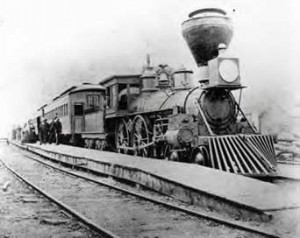 Then, after fourteen years’ exile, Riel returned. He had been teaching at a mission school in Montana when a Metis delegation arrived. The provincial government had not kept Manitoba intact for the Metis, now outnumbered by white immigrants. The government’s procrastination over granting land to the Metis and its refusal to recognize them as a distinct people had revived discontent. Worse, Eastern speculators had been granted Metis-held lands and authorized to evict them.
Then, after fourteen years’ exile, Riel returned. He had been teaching at a mission school in Montana when a Metis delegation arrived. The provincial government had not kept Manitoba intact for the Metis, now outnumbered by white immigrants. The government’s procrastination over granting land to the Metis and its refusal to recognize them as a distinct people had revived discontent. Worse, Eastern speculators had been granted Metis-held lands and authorized to evict them.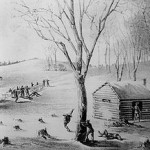
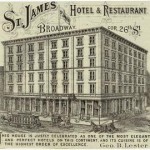 Four years later, he began working for the New York Central Railroad. He studied bookkeeping and penmanship (he wrote a magnificently ornate hand and usually signed his name in full, deeming James Buchanan Brady a name worthy of a few flourishes).
Four years later, he began working for the New York Central Railroad. He studied bookkeeping and penmanship (he wrote a magnificently ornate hand and usually signed his name in full, deeming James Buchanan Brady a name worthy of a few flourishes).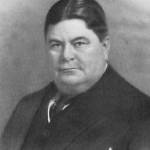
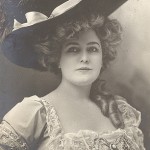 Yet Brady’s relationship with the most lusted-after woman in the United States—the blonde, blue-eyed, spectacularly voluptuous Lillian Russell—was entirely Platonic. America’s sex symbol during the 1880s and ’90s, Russell had made her mark as an actress and singer, but she was also a skillful card player and and an unerringly accurate tobacco spitter. Her extraordinarily warm, intimate friendship with Brady lasted for over thirty years. He was her frequent escort; they traveled and vacationed together; they confided in one another. She came to love him dearly. Sex, however, never entered into it.
Yet Brady’s relationship with the most lusted-after woman in the United States—the blonde, blue-eyed, spectacularly voluptuous Lillian Russell—was entirely Platonic. America’s sex symbol during the 1880s and ’90s, Russell had made her mark as an actress and singer, but she was also a skillful card player and and an unerringly accurate tobacco spitter. Her extraordinarily warm, intimate friendship with Brady lasted for over thirty years. He was her frequent escort; they traveled and vacationed together; they confided in one another. She came to love him dearly. Sex, however, never entered into it.